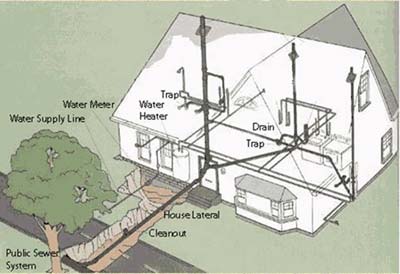Few steps to getting your sewer connected to be aware of!!
You will need to make contact with Thames Water to get a consent to connect letter as this allows them to look at the layout and determine which connection if any you can have. This is also very important for the contractor you hire as they cannot begin to price the works for you until they receive this letter as this tells them what type of connection they will be making so In turn determines other costs like labour, plant and materials needed. It would also be good to mention the time it can take for you to receive the letter so be organised and do this as early as you can to get the wheels in motion for your project.
Another document you will need before any contractors will be able to quote your works is an Asset Search which you can also get from Thames Water but some contractors including ourselves can obtain this for you for a small fee. An Asset Search is a plan of the site you are proposing works on with the layout of the sewers and manholes so Thames Water, you and the contractor can all see where the main sewers are and where the connection can be made if there even is one! This again can be time consuming so make sure you apply for this as early as you can.
You would to look for a contactor who is approved with the Highways Council as well as the relevant water company for your project.
The best way to achieve a quicker turn around for your works to begin would be to obtain the above documents before you contact any contractors as you can then send the letter and asset search straight across and the contractors will have all the information they require to build a quote for you. Also finding a company you want to complete your project can be a time consuming task, but you can always ask Thames Water for a list of their approved contractors (like SB Civils) and then use the magic of Google to search through for your perfect company.
You also need to be aware of having the correct fall from site drainage – All above ground and below ground horizontal drainage pipes should be laid to an adequate gradient. Gradients from 1 in 40 to 1 in 110 will normally give adequate flow velocities. A gradient of 1 in 80 is suitable for commencing calculations for pipe schemes. If a gradient is too steep i.e. steeper than 1 in 40, the liquid may run faster than the solids in the sloping foul water pipe thus leaving the solids stranded, which could then block the pipe. If the gradient is not steep enough, i.e. less than 1 in 110, then the pipe could still block if the solids slow down and become stranded. The fall in a pipe may be defined as the vertical amount by which the pipe drops over a distance. The distance can be between sections of pipe or between manholes. The diagram below show pipe fall and distance.
If you follow these few a steps you should have a smooth run through to getting your project on its way – but I would like to give you a few examples how getting your sewer connected can go wrong so in helping you avoid any of these situations:



